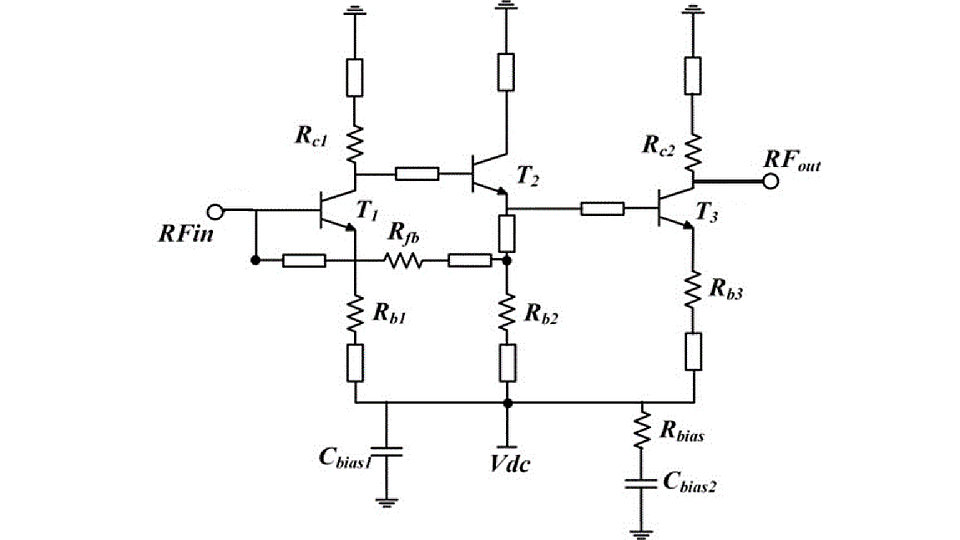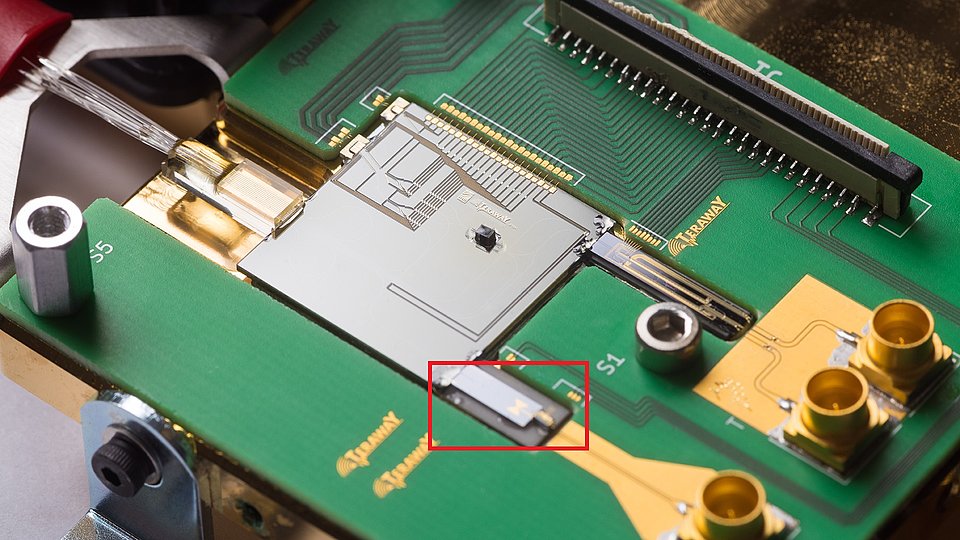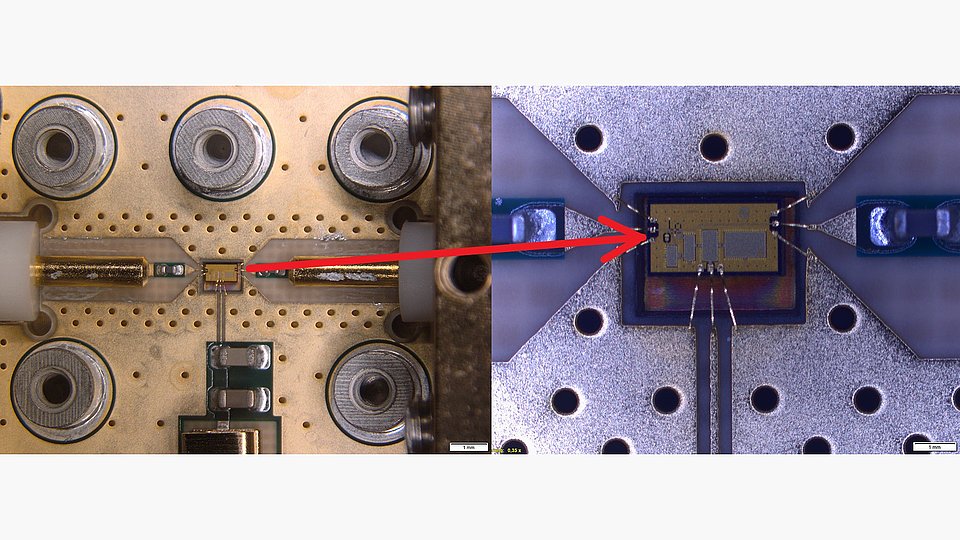Towards ultra low-noise transimpedance amplifiers using InP HBT devices for sub-THz communication
The Ferdinand-Braun-Institut (FBH) develops InP-based DHBT device technologies for ultrawideband, high-power and low-noise applications that target mm-wave to sub-THz communication applications. In fact, FBH has established a full eco-system for InP-based technologies: from epitaxial material definition for improved transistor operation, device processing to circuit design and MMIC processing as well as heterointegration to achieve high linearity, low-noise, and high-efficiency circuit and component operation. To explore the low-noise potential of these technologies, we designed, fabricated, and measured a transimpedance amplifier (TIA) within the framework of the TERAWAY project (EU G.A No. 871668). Although, we realized a traditional HBT to deliver high output power (taking advantage of its high carrier mobility and wide bandgap), there is room to improve the noise performance by lowering the resistance at the base of the transistor and operating the transistor at low bias condition.
Using the circuit diagram as shown in Fig. 1, we designed the TIA using a 850 nm node with a target DC frequency of >10 GHz and an ultra-low input current noise of 3 pA⁄√Hz, being the lowest value in literature for this bandwidth. The measured transimpedance gain was 50 dBΩ within DC to 10 GHz, which was sufficient to match a photoconductor to a 50 Ω environment. The measurement results are shown in Fig. 2. [1]
The TIA is delivered in two sets, one being the raw circuit mounted on PCB as shown in Fig. 3. The other set being a fully packaged TIA (Fig. 4) module that is intended for standalone use. The TIA receives DC bias in both formats, which indicates its proper functionality in both formats.
Even though state-of-the-art value was reached in terms of low input referred current noise, the future development is aimed at higher bandwidths, close and beyond 100 GHz, thereby, facilitating >140 GHz single channel OOK signals.



